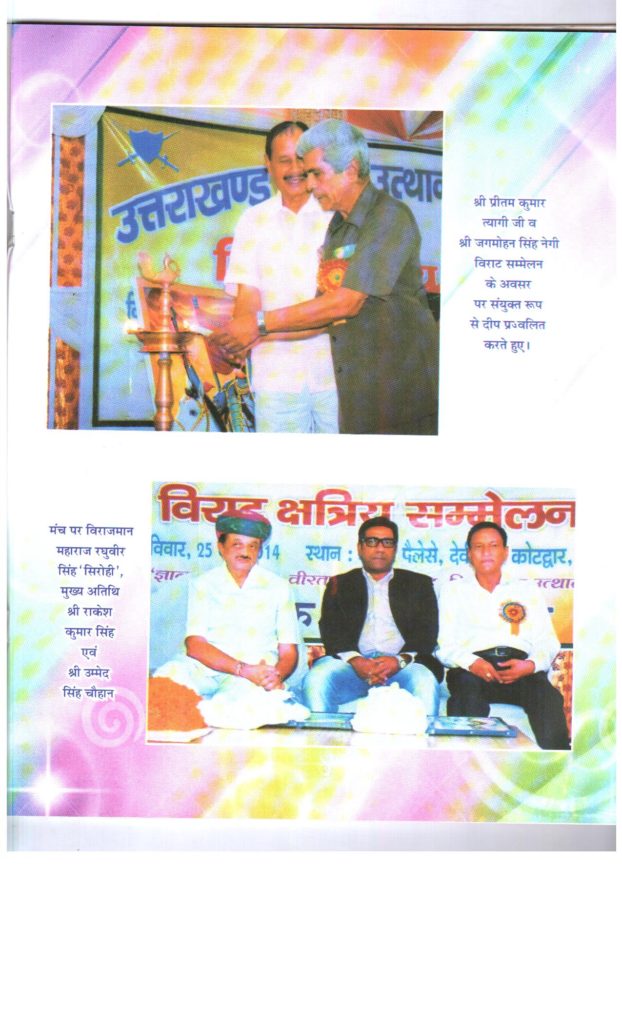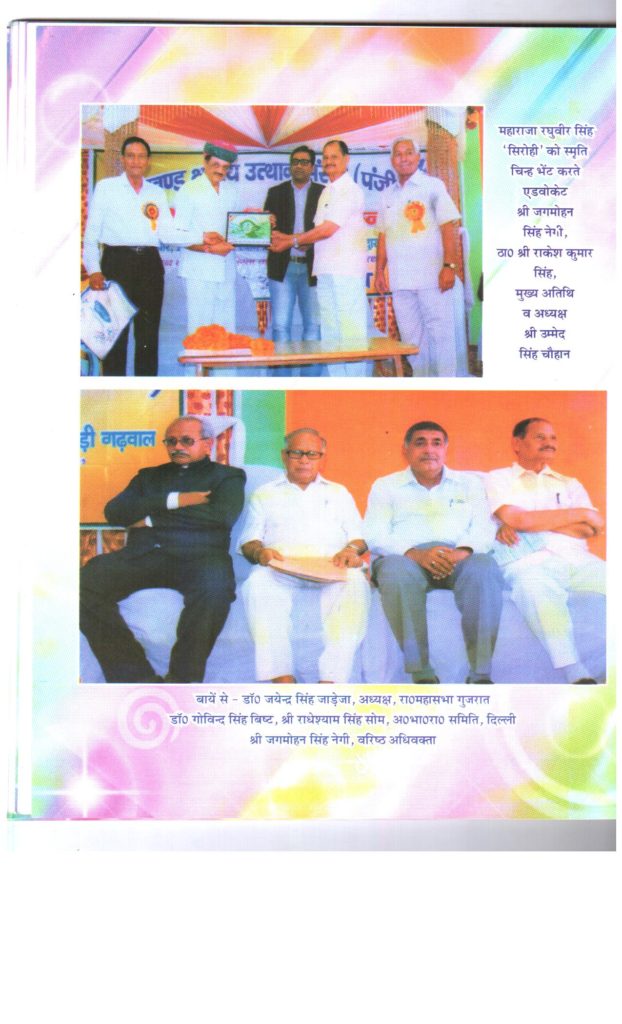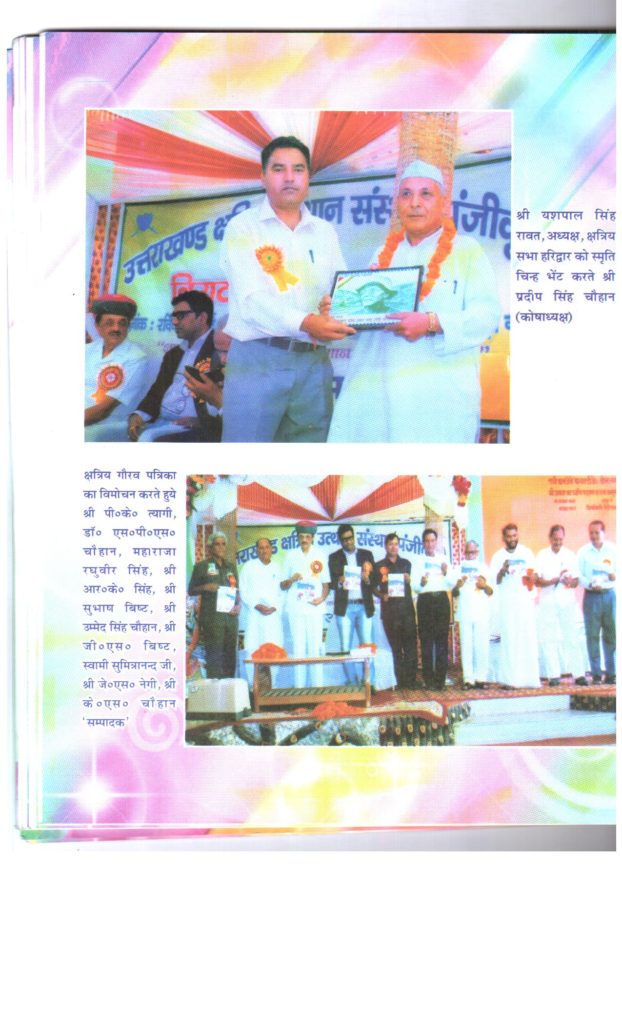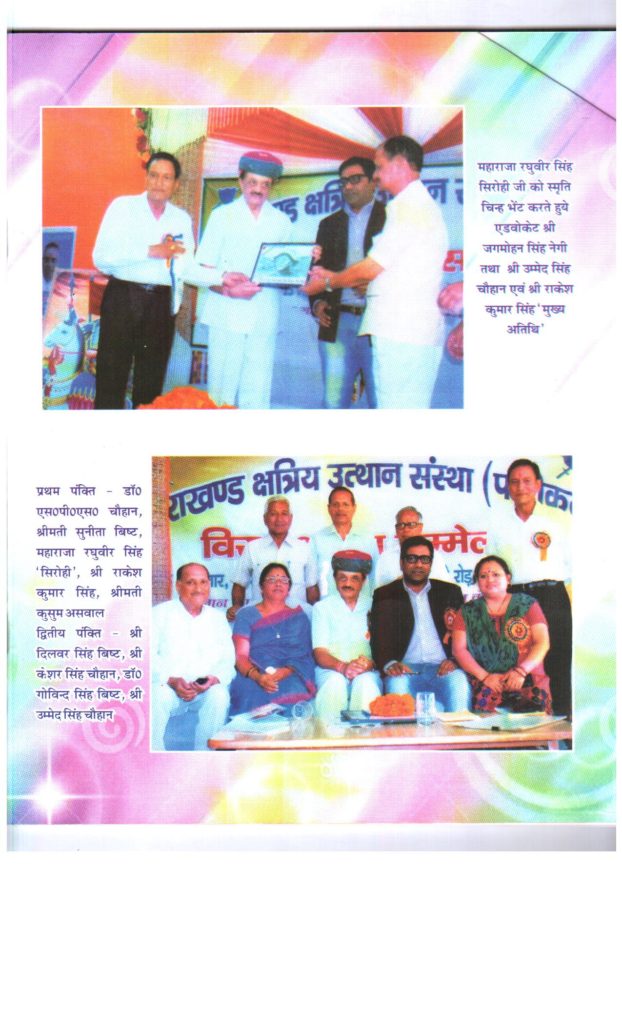A quality Education is today’s need as it is the development of intellectual skills and knowledge which will equip learners to fulfil the needs of professionals, decision makers and trainers. The story of education in India is a paradox. Twenty percent of Indian gets a fairly decent education, and in a nation of 1.2 billion, this is huge number and helps to explain why India has become the back office of the world. Government schools have failed in India, and this is why one-third of Indians children attend private schools. The Government has implicitly recognized its failure and requires that a fourth of the seats in all private schools be reserved for the poor, whose fees are subsidized by the Government. Education is the most crucial investment and an essential element in human resource development. It has always been accorded an honoured place in every economy. It implies ability of the people to read, write and understand. It has the fundamental aspects of imparting knowledge, wisdom and culture. It helps in drawing out the latent potentials and talents of an individual. A well-defined educational system holds the key to economic growth, social transformation and modernisational integration of a country. It develops manpower for different segments of the economy and is the substrate on which innovation, research and development flourish. Thus, education helps the country in achieving social, political and economic goals on national and international levels. It also strongly influences improvement in health, hygiene, demographic profile, productivity and quality of life. Eradication of illiteracy has been one of the major national concerns of the Government of India since independence.
Under the Constitution of India, initially, education was a State subject, that is, it was the exclusive responsibility of the States. But, the 42nd Amendment Act of 1976, shifted it from the ‘State list’ to the ‘Concurrent List’. This step gave both Central and State Governments jurisdiction over it concurrently. While the role and responsibility of the States in education remained largely unchanged, the Central Government accepted a larger responsibility of reinforcing the national and integrated character of education, maintaining quality and standards for all areas including those of the teaching profession, as well as studying and monitoring of the educational requirements of the country. In other words, it aimed at promoting excellence at all levels of the educational pyramid by developing efficient manpower base, catering to the needs of research and advanced study as well as looking after the international aspects of education.
LEGAL EDUCATION IN INDIA
Significance of Legal Education
‘Law is the cement of society and an essential medium of change’. The significance of legal education in a democratic society cannot be over-emphasized. Knowledge of law increases one understands of public affairs. Its study promotes accuracy of the expression, facility in arguments and skill in interpreting the written words, as well as some understanding of social values. It is pivotal duty of everyone to know the law. Ignorance of law is not innocence but a sin which cannot be excused. Thus, legal education is imperative not only to produce good lawyers but also to create cultured law abiding citizens, who are inculcated with concepts of human values and human rights. We must have a legal education which can fulfil the need of the society and country as well. We are no longer laissez-faire but a welfare State and in welfare society law plays a very important role in every affair of human being.
Law serves as an important instrument to achieve socio-economic development. Today law is not viewed merely as an instrument of social control but also an instrument of social change. The aim of legal education should be not only to produce good lawyers but also create cultured, law abiding citizens who are inculcated with concepts of human values and human rights who can serve humanity in various capacities such as, administrators, law teachers, jurists, judges, and industrial entrepreneurs etc. As far as creation of good advocates and solicitors is concerned, the legal education should aim at equipping them with legal techniques and professional skills.
Legal profession is objectively in the position of producing Statesmen. This is due to two reasons
1) Lawyers belong to an independent profession. They are not subordinate to the government or to anyone else.
2) They are directly in contact with society in its entirety as they have to deal with all kinds of problems of people from all sections of society, unlike say, doctors who are confined to technical problems. Hence lawyers are the people who are most conversant with the problems of society as a whole.
A well administered and socially relevant legal education is a sine qua non for a proper dispensation of justice. Giving legal education a human face would create cultured law abiding citizens who are able to serve as professionals and not merely as business men.
The quality and standard of legal education acquired at the law school is reflected through the standard of Bar and Bench and consequently affects the legal system. The primary focus of law schools should be to identify the various skills that define a lawyer and then train and equip its students with requirements of the field of law.
Improving Legal Education in India:
Dr. Radhakrishnan lamented, “our colleges of law do not hold a place of high esteem either at home or abroad, nor has law become an area of profound scholarship and enlightened research”. But this trend is slowly changing colours with more and more bright and talented students being attracted to the legal profession.
Over the years, there has been a considerable degeneration of academic standards within these law departments with little scope for innovation in the design of courses, development of appropriate teaching modules, formulation of research agenda including undertaking of research projects, and also the promotion of advocacy in lawyering. The departments also suffered from lack of independence and institutional autonomy, as they were within the university system whose priorities did not always match. As a result, the ability to attract talented students with a passionate commitment to study law in all its ramifications dramatically reduced culminating in institutionalized mediocrity in law faculties across the country. There is no doubt that the establishment of the national law schools starting with the National Law School of India University (NLSIU) in Bangalore followed by some other places successfully challenged this institutionalised mediocrity and succeeded in attracting talented students to the study of law. In fact, the study of law has received better attention among high school leavers in the country with the introduction of five-year integrated programmers.
But where these schools face significant challenges is in attracting faculty members who are top researchers in the field of law and can combine sound teaching methods with established track records of research. The lack of researchers in law and absence of due emphasis on research and publications in the existing law schools have led to the absence of an intellectually vibrant environment.
Research can contribute significantly towards improvement in teaching and, more importantly, addressing numerous challenges relating to law and justice. If one were to look at the faculty profile of the world’s top law schools, one will find that there is great emphasis on research and publications among academics. Besides teaching, they contribute in significant ways by initiating and developing research projects in cutting edge areas, by professional contributions to international organisations, law firms and corporations, and by playing an important role in government policy formulation and promoting civil society activism. Law schools and academics in India need to go a long way in developing an institutional culture that promotes and encourages research that has the capacity to foster many positive changes in society at large.
Change in Curriculum
The emphasis from traditional laws to contemporary subjects has to be addressed and taught in legal education. In fact the conventional role of a lawyer is changing from resolving disputes within the Court room to that of a policy planner, business advisor, mediator, law reformer etc. The lawyer has to interact with other professions on an equal footing and must be able to relate to scientific and technical knowledge. The law curriculum for the future must provide an integrated knowledge of bio-diversity, bio-technology, information and technology, environmental sciences, ocean and marine sciences, public health and other related subjects. Then alone, the unmet legal needs of different sections of society and the impact of globalisation can be addressed to and the students will be equipped to contribute to the society when they leave the portals of their alma mater. In order to do so, the institutions must be given a free hand in choosing the subject so that the students are able to conduct research work I their respective fields. The Bar Council of India must perform only a supervisory role in equipping and funding the libraries.
Hiring good teachers and researchers:
There is a need to fundamentally re-examine the context of legal education in the country. The present system does not sufficiently recognise the key problem with regard to legal education — lack of faculty members who are good teachers as well as sound researchers. There is need to identify talent among young lawyers so that they can be encouraged to consider academia as a career option. There is no doubt that poor financial incentives discourage many young and brilliant lawyers from considering a career in academia. It is important to address this issue as well. But there could be other factors where improvements and changes are feasible: such as career development opportunities within the law schools; development of research infrastructure including the resources to organise and participate in national and international conferences, and undertake serious research; a harmonious environment that fosters mutual respect; governance of the law schools in a transparent fashion; and, above all, faith in the leadership of the institution that excellence will not only be promoted as a general policy, but affirmative efforts will be taken to encourage and support excellence.
Effect of Globalization and Free Trade:
Globalisation and the changing dimensions of the Indian economy and policy have thrown up new challenges of governance. Rule of law in all its dimensions remains the single most important challenge the country is facing. The criminal and civil justice systems are under severe stress. The role of law schools in imparting legal education and developing lawyers who are rational thinkers and social engineers is central to the future of legal education and the development of a knowledge economy in India. This can be done only if the law schools are able to attract some of the best and the brightest lawyers to make a lifelong commitment to teaching, learning, and research so that they are able to inspire generations of students to work towards establishing a rule of law society in India.
Concluding Discussion
Education reforms currently planned or implemental throughout the world need to include deeper and more comprehensive analysis of what and how schools and leaders should do in order to contribute to the development of Indian economic system of the countries. The emergence of the network society and knowledge based economics appear to be a powerful justification for education reforms in developed countries.
Living in and working for a world of innovations requires fundamentally different attitudes, knowledge and skills from the citizens. Technological adaptation and innovation have been the main drivers of economic growth in developed countries sin the world war 2nd and are praying to be important factors also in many developing countries. Successful economic complete on the basis of high values, not only low cost. High value is best guaranteed by well trained and educated personnel and flexible lifelong learning opportunities for all citizens. The most frequently presented general idea for increasing Indian economic development is to equip people with the skills and attitudes success in an increasingly knowledge based economy.
Rio Olympics – Sports in India
INTRODUCTION:
Sport is regarded as one of the largest industry globally in terms of employment and revenue. The Business of Sports is a multi-billion dollar global industry propelled by enormous consumer demand. The sports business means many different things to different people. This is a truly global industry, and sports stir up deep passion within spectators and players alike in countries around the world. Sports, a field in which players and champion of every state come together to make their career in it and fulfill their aspirations, their family aspirations, their society’s aspirations, their state aspirations, and their nation’s aspirations. It is said that passion can lead man to success. People are now looking at sports business as a career which ten years ago was not an option. Of course, the real and inherent vision of sport remains physical activity and a substitute for war. Yes, you heard it correctly, substitute for war. Team sports may have been developed to train and prove the capability to fight and work together as a team.
BACKGROUND: Sports in India are not new and it has its origin in prehistoric times and there are evidences to that effect in the form of cave paintings. India is also cradle to various modern sports and thus chess, snooker, hockey, kabaddi originated in India. India has also been host to some of the important world sporting events and thus the 1951 Asian Games, officially known as the First Asian Games, was celebrated in Delhi, India from 4 to 11 March 1951.
PROBLEM AREASHowever, Sports in India, seems, over the years has taken a back seat and in a population of 125 Crores we struggle to get one medal in Olympics and get into double-digit in Asiad. Why such a pathetic performance by a nation having such a vast population? Some of the Reasons I can think of are:-
1. Poor conditions of sports hostel run by the sports authority of India (SAI);
2. Poor infrastructure of training camps;
3. Issue of harassment of Juniors by their seniors;4. Issue of sportswomen facing sexual harassment by their coaches;
5. Lack of funds by the government due to minor thinking about its low priority except for cricket; (private equity investors, venture capitalists and angel investors. They can convince investors (through proposals) on options of investing and profiting in local stadiums, courts and complexes and informal sporting events which need not be recognized by official sporting bodies)
6. Poor functioning of sports federation in the country at administrative levels etc.
7. Doping, corruption, match-fixing, etc
WHAT IS NEEDED But we know every problem has a solution in it and so there is a need to make reforms in this field by improving the poor infrastructure into high-tech ones; CCTV should be placed at the sport room where sportswomen are getting trained; surprise checking (visit) should be done at regular basis; there should be helpline number provided and made available 24×7; cleaning of hostel and training camps should be done necessarily; cases of sexual and mental harassment should not be gone unreported for this there is need to encourage sportsperson to raise voice and make complaints, see to it that people play it honestly and there is no match-fixing, proper funds to be diverted to thus field in order to make more improvements. The problem of the fund is a big thing. Just like the search of funds in entrepreneurial ventures, the sports sector is thus in dire need of funds which in its simplest manner can come from private equity investors, venture capitalists and angel investors. They can convince investors (through proposals) on options of investing and profiting in local stadiums, courts and complexes and informal sporting events which need not be recognized by official sporting bodies. This all steps should be followed and there is a need to help and counsel to each and every sportsperson in the best possible way.
The mindset of government and society should be changed towards sportsperson because they are pillars of our nation to represent it internationally. Sport in India, in general, is not considered a viable and good career option and at the maximum is considered as a side discipline/activity by society. Successive governments have run sports institutions by politicians (who have no background in sports) and considered sports-persons, not as someone who can bring laurels to the country. Freedom and financial independence from the state are decisive in improving sports in India. The federal government is a facilitator of sports development in the country. However, it has been observed that in recent times cronyism is a constant phenomenon in sports associations/councils. On 4 December 2012, the International Olympic Committee suspended IOA (Indian Olympic Association) on the basis of corruption, government interference, and not following guidelines of the IOC. Several members of the IOA have been charged with crimes. The IOA was formally banned for not following the Olympic Charter in their elections, instead of following the Indian government’s Sports Code. On 15 May 2013, International Olympic Committee (IOC) decided to lift the ban on the Indian Olympic Association (IOA) as Indian representatives from the government and sports bodies reached an agreement with IOC officials. There are a few glaring issues which need attention-
1. Lack of dignity and respect for sports other than cricket;
2. Identification and nurturing talent – Talent needs to be picked up right from school level to have sufficient time in hand to groom them as world-class sportspersons.
3. Political interference – It should be done away with to let sport institutions work autonomously (preferably headed by a specialist in respective discipline).
4. Financial aid to needy but talented – Such candidates should be helped in terms of scholarships/fee-waiver to help them continue with their studies and pursue sports too.
5. Overhaul of sports infrastructure- Sports infrastructure needs to overhauled to provide the globally competitive best facilities for training. School level sports facilities should also be improved.
6. Adequate respect for other disciplines-Sports other than Cricket should also be given their due by the media, citizenry and the society at large.
7. Sports should not remain only a governmental activity and private corporate nurturing and funding should be encouraged.
LAWS GOVERNING SPORTS IN INDIA: We have laws for almost everything. In the same way, we have laws governing sports in India. Sports law in India is governed & regulated by National Sports Policy, Sports law, and Welfare Association of India, Sports Authority of India and the Sports Broadcasting law in India. In India, sports is in the Concurrent list of the Seventh Schedule (entry 33) of the Constitution on which both the union and state legislatures are proficient to put together laws. There are 3 States; Rajasthan, Himachal Pradesh, and Uttar Pradesh, which have enacted laws on regulating sports activity including registration, regulation, and recognition of Sports Associations (Uttar Pradesh has since repealed the Act). National as well as provincial sports bodies, clubs, associations or societies are more often than not, set up under the law of societies. These are autonomous non-profit making private bodies. Additionally, many of these are also established as non-profit associations under the company law jurisdiction in the UK and Commonwealth countries including India. The Aim of Sports Law is to regulate, provide educational opportunities and disseminate data and information regarding specific areas of sports. The Government must encourage discussions of legal problems affecting sports and promote the exchange of a variety of perspectives and positions of sports law. Establishing rules of ethics for sportspersons and practicing professional of law involved in sports law will support the sports industry. It should also endeavor to produce high-quality research in the field of sport and the law; provide up to date information on current sports law issues including a resource of sports law material; provide consultancy to sportsmen and sports bodies concerning sports law issues; promote undergraduate and postgraduate study, research and continuing education in sports law; promote ethical solutions to legal issues in sport and notions of “Fair-Play”; and positively address all issues of discrimination in sport.
CONCLUSION: Now, sport is going to be the next big industry in India. In developed countries, sports contribute around 2 to 4 percentage of total employment. It includes a variety of career profiles such as athletes, coaches, trainers, event managers, public relation officers, Coordinator of sports organizations, Marketing Consultant, Program and Facility Manager, Professional Sports Promoter, Sports equipment, and product sales, Sport Event Planner and Manager and Sports Sponsorship Specialist. The year 2008 was a landmark in sports development in India with the introduction of a new model in cricket. Sports industry expects faster growth in a shorter time frame. It has the potential to overtake IT and related industries before 2020 in every aspect. But yes, we should think of sports beyond cricket.
Model shops and establishment bill
The bill is ‘Model shops and establishment bill’ (Regulation of Employment and service bill), 2016. It states that shops, malls, restaurants, cinema halls, banks, etc. can operate 24 hours with all 7 days and 24 hours. All such units which employee 10 or more workers are proposed to come under this Act. The draft law proposes to cover all premises, barring factories, or shops with work related to printing, banking, insurance, stocks and shares, brokerage or theatres, cinema and “any other public amusement” which is currently not covered under the ‘Factories Act, 1948’. However, the law will not apply for government offices and the Reserve Bank of India. So the government will not work for 24×7, though they expect the people to work for 24×7.
The bill has been passed by the Union Cabinet on 29th June 2016. This bill is issued as an advisory to the states & it is up to the states to take it up or make changes and thus is subject to state laws. The Bill has protected the worker’s right while framing the law and is likely to give a boost to the revenues of the service sector which can now open all day/night long. Now for the first time, godowns, warehouses or workplace related to packaging activities are proposed to be covered under the law, as per the draft model law. The key features of the bill are it provides freedom to operate 365 days in a year & opening/closing time of establishment. Employees can work a maximum of 9 hours a day and 48 hours a week. Any time spent over and above these limits will be treated as overtime; a maximum of 125 hours per quarter is allowed. There is no gender inequality as they have kept Article 14 of the constitution in their mind by permitting women for night shifts with necessary amenities & adequate protection of their dignity & calls for better working conditions for employees such as drinking water, canteen, first aid, lavatory, and crèche. There is no discrimination against women in the matter of recruitment, transfer, training or promotions. The bill contains 5 paid festival holidays in addition to national holidays. Model bill brings uniformity in legislative provisions by making it easier for all states to adopt it. It also ensures uniform working conditions across the country & ease of doing business. By this all the restaurant, cinema, etc. owners are happy as they had waited a lot for this bill. Their income also increases & it’s beneficial to the public too as if someone has been to office &comes late home he does not have to wait for another day.
Sadly, the bill does not cover manufacturing units & Government offices and further, the bill attempts to discriminate between the traders. The provision that the bill will cover only establishments employing 10 or more workers would deny the fundamental rights of other businesses who are either self-employed or have less than 10 workers. This can lead to consequences which should be fixed. Otherwise, the bill is beneficial which has the potential to boost the economy and can provide additional employment opportunity.




